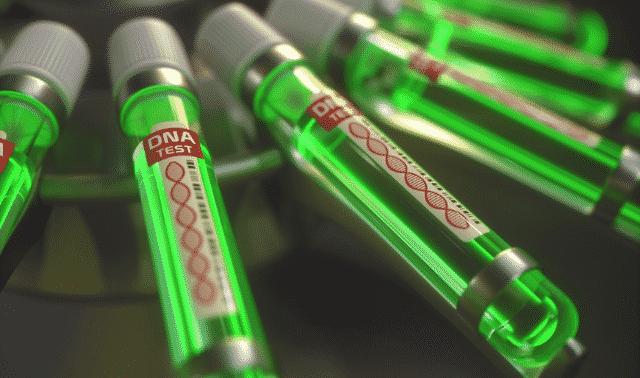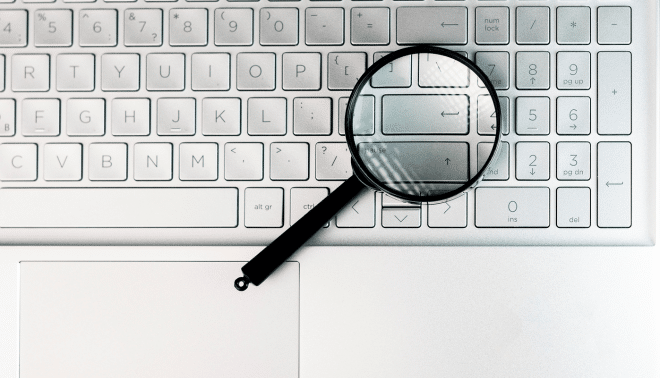Sign up for the Family Tree Newsletter! Plus, you’ll receive our 10 Essential Genealogy Research Forms PDF as a special thank you.
Get Your Free Genealogy Forms
"*" indicates required fields

Jump to:
How reliable is the health information reported by genetic genealogy companies?
How reliable is information from DNA tests?
Q: How reliable is the health information reported by genetic genealogy companies?
A: The number one most important thing to understand before we launch into a discussion about DNA and any kind of health information is that DNA is just one of many factors that affect our health. At this point, you are more likely to benefit from the simple advice of fewer cookies and more long walks than you are from the analysis of your DNA. But that will change as we gather more information, and let’s face it, it is a lot less fun that a DNA test!
While there are many companies offering to provide insight into what your DNA may have to say about your health or traits, we are just going to focus here on what you can get from your genetic genealogy companies. We have four of our companies who are currently offering this kind of health testing: 23andMe, AncestryDNA, Family Tree DNA, and MyHeritage. Each company is offering this service for an additional fee above and beyond the regular fee of providing results for your genetic genealogy.
Disease Predisposition Information Unreliable
The predisposition to the disease realm of these results is possibly the most interesting and impactful, but also the least reliable. In a study published in March of 2018 it was reported that people who get disease predisposition information from a direct-to-consumer DNA test (like our genetic genealogy companies) are getting false positives 40% of the time! (Genetics in Medicine volume 20, pages1515–1521 (2018) That is incredibly high. There are lots of reasons for this, but one reason is that there are multiple DNA markers that contribute to a disease, and our testing companies often aren’t testing enough of them. However, if the purpose of the test is to just increase your awareness about things like heart disease and macular degeneration, then perhaps it is serving that purpose.
Only 23andMe and MyHeritage are offering insight into your disease predispositions. The reports are broken up into two parts: Genetic Risk, and Carrier Status. Essentially, the Genetic Risk is all about you and how likely you are to develop a certain condition based on your DNA. The Carrier Status is all about your kids and grandkids. See, when you are a carrier, you may not have the disease yourself, but if you and your partner are both carriers, it increases the likelihood that your children will develop that disease. Ultimately, both kinds of reports should be used to help you decide if you need to make an appointment with your doctor or a genetic counselor to do further testing and get more information.
Trait Reports
The Trait reports produced by 23andMe, AncestryDNA, and Family Tree DNA are, for the most part, things you are likely to already know about yourself. These traits run the gamut from eye color and hair color to whether or not you are an early riser. While not likely to be life-altering, these reports can start good conversations with your family about DNA inheritance, and possibly even allow you to ease into a short quip about great grandpa William who also had detached earlobes.
If you have tested at any of our major genetic genealogy companies, and would like an inexpensive look at some of your health information, you might want to try Promethease.com. They are an academic endeavor that can provide you a long (and sometimes confusing, but definitely interesting) report about your traits and health predispositions.
Q: How reliable is the information from DNA Tests?
A: Remember there are two parts to your DNA testing. You receive information connecting you to locations, as well as DNA that connects you to people. We have to talk about these results differently.
Your location information comes in the form of your ethnicity results. Those pie charts and percentages are based on several including reference populations (who they are comparing you against) and lots of fancy math. In science we define reliable ethnicity results using two metrics: precision and recall. Precision measures the diversity of a genetically related group of people. So if we have a group from Ireland who are sharing DNA, do we also see people from England or France in that group? If the answer is yes, we have low precision, if the answer is no, then precision is high (high is better, in case you were wondering!).
Recall is when we look at a group of Irish people and we ask how often they are placed into the Irish category, as opposed to being siphoned off to Italy or England or Scandinavia. Think of recall like the call of a bird, that should only be answered by other birds of a feather.
Factors Affecting Results
There are several factors that can affect these results, but the top two are reference populations and some really fancy math. For example, let’s say you have ancestors from Albania. If your testing company has not sampled a large enough group of people from Albania, they may not have a specific category (or reference population) at the testing company for that group. So, they place you in the Italy group as it best fits their current data and yours, and you are left wondering if you really are Italian.
Due to the way our DNA has traveled the world throughout the time, it is very very difficult for our testing companies to be accurate when it comes to our ethnicity results. That’s why they are all termed estimates. So their reliability depends heavily on their current data and alorithms. You should review all of the reference populations and your testing company to see if they have categories for your known ancestries, and just be patient and they improve their science and their estimates.
The Accuracy of DNA Matches
The second kind of results are your DNA matches. We are tempted to define accuracy in this case by how well the DNA testing company accurately identifies our relationship to our cousin. So if my second cousin tests, and the testing company calls that person my second cousin, we may feel that is accurate. But when my great aunt tests and they call her my first cousin, I might feel the test is inaccurate.
However, while the relationship labels may be misleading, when we talk about relationships in terms of degrees or steps, we can see that it is accurate. For example, it is four steps from me to my first cousin: me to my parent=1, to my grandparents=2, grandparent to aunt=3, aunt to first cousin=4. It is also four steps to my great aunt: me to my parent=1, to my grandparents=2, grandparent to great grandparents=3, great grandparents to grand aunt=4. It can be a bit tricky to think of it this way, but it does help to see how the relationship predictions work.
But perhaps the simplest view of accuracy is in simply noting that your top matches are extremely accurately reported in that these people are certainly your relatives, even if you can’t quite figure out your relationship.




